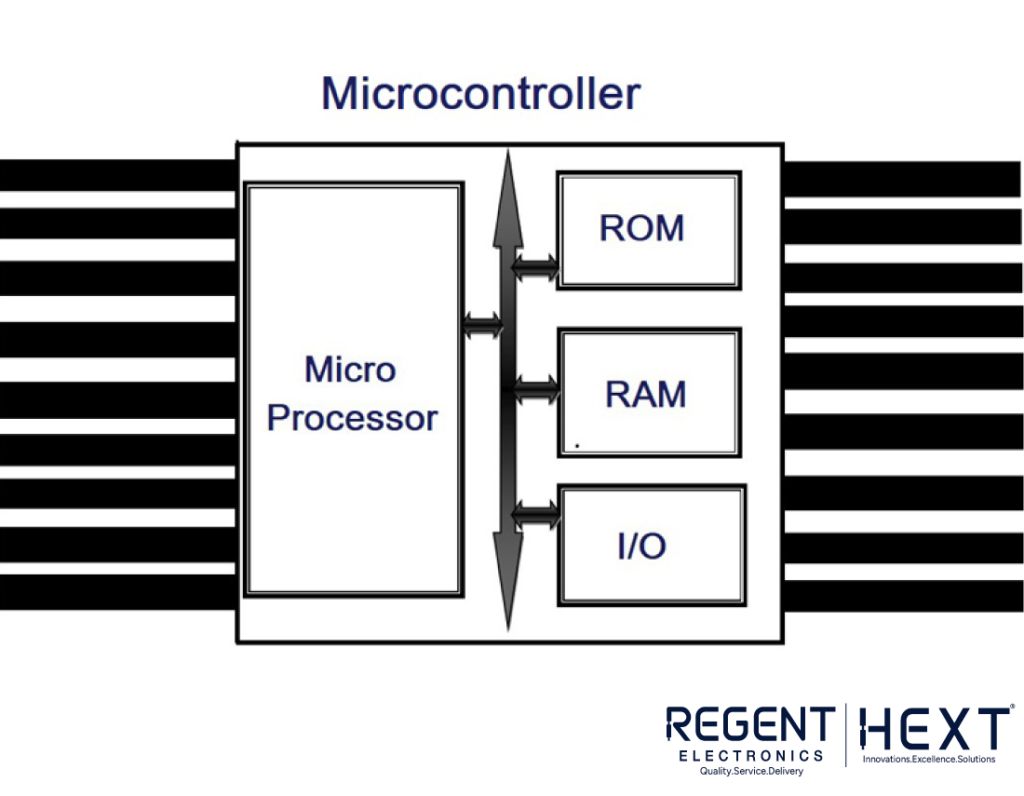
Difference Between Microprocessor and Microcontroller
Microcontrollers and microprocessors are often confused with each other due to their similarities, but they serve different purposes in electronics and computing. In this blog, we will explore their key differences, functionalities, and applications to help you understand which one is best suited for your project.

What is a Microprocessor?
A microprocessor is the central unit of a computer system that performs computations and processing tasks. It consists of only the CPU (Central Processing Unit), meaning additional components such as memory, input/output ports, and peripherals must be connected externally for full functionality.
Applications of Microprocessors:
- Personal computers and laptops
- High-end gaming consoles
- Complex industrial machines
- Advanced security systems
- High-tech medical devices
Since microprocessors do not have built-in memory or peripherals, they are ideal for applications requiring extensive processing power and flexible memory management.
What is a Microcontroller?
A microcontroller is a compact integrated circuit designed for specific applications. It includes a CPU along with built-in memory (RAM and ROM), input/output ports, and other peripherals like timers and counters. Unlike microprocessors, microcontrollers are self-contained and do not require external components for basic operations.
Applications of Microcontrollers:
- Washing machines
- Microwaves
- Digital cameras
- Remote controls
- Automotive engine control units (ECUs)
Microcontrollers are designed for embedded systems where a predefined set of instructions needs to be executed repeatedly.
Key Differences Between Microprocessor and Microcontroller

| Feature | Microprocessor | Microcontroller |
| External Components | Requires external RAM, ROM, and I/O ports | Built-in RAM, ROM, and I/O ports |
| Size and Complexity | Larger and more complex circuits | Compact and self-contained |
| Cost | Higher due to external components | Lower due to integrated peripherals |
| Power Consumption | Higher as multiple external components are required | Lower as it is optimized for power efficiency |
| Processing Speed | Faster processing power for complex computations | Optimized for dedicated tasks with lower processing speed |
| Architecture | Based on Von Neumann architecture (shared memory for program and data) | Based on Harvard architecture (separate memory for program and data) |
| Usage | Used in computers, high-end gaming, and advanced computing applications | Used in embedded systems like home appliances and automotive systems |
Which One Should You Choose?
- If your project requires high computational power, flexible memory allocation, and multitasking capabilities, a microprocessor is the better choice.
- If your project is a dedicated task-oriented application that requires power efficiency and compact design, a microcontroller is the ideal solution.
Conclusion
Microprocessors and microcontrollers serve different purposes in the electronics industry. Microprocessors are ideal for powerful computing applications, whereas microcontrollers are designed for embedded systems that require efficiency and reliability. Understanding their differences can help you make the right choice for your next electronic project.
For more information on choosing the right microcontroller for your project, stay tuned to Regent Electronics!
